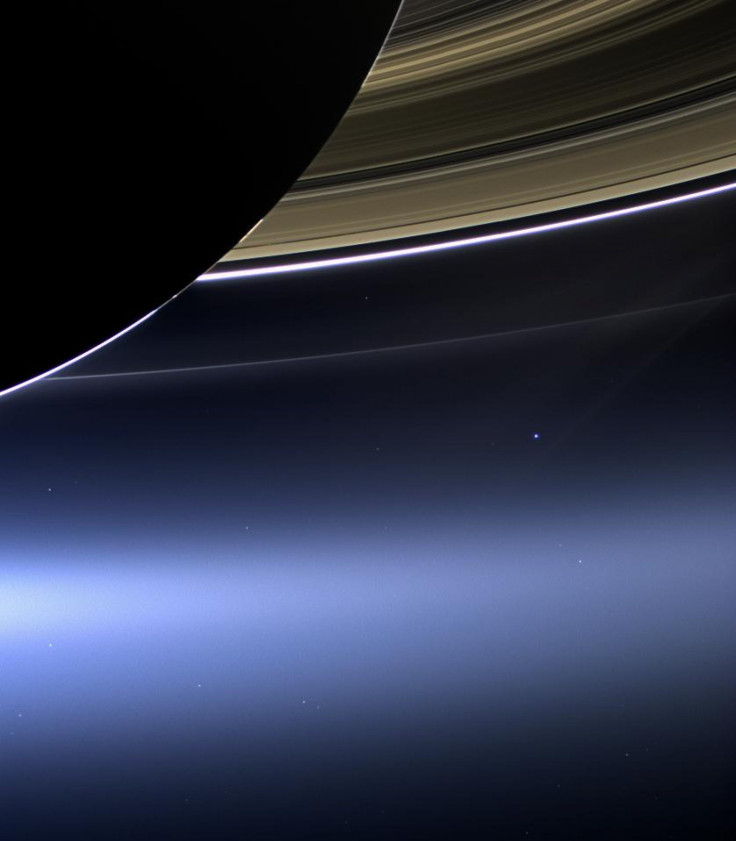NASA Releases Official Photos Of Earth Taken From Saturn And Mercury [PHOTOS]
NASA’s Cassini spacecraft was in position nearly 900 million miles away to take photos of Earth on July 19. The raw images beamed back from Saturn have been processed, and the space agency released the photos of what Earth looks like from Saturn.

The unprocessed, monochrome raw images were delivered by the Cassini on July 20. NASA reported that processing those images would take several days. However, the Cassini was not the only spacecraft taking photos of Earth: NASA’s Messenger spacecraft was doing the same from Mercury. The Cassini was approximately 900 million miles from Earth when it took its photos while the Messenger was approximately 61 million miles away.
During this unique occasion, NASA launched the “Wave to Saturn” social media campaign. People from around the world were invited to submit photos and share their view of Saturn from Earth as the Cassini was in position to take photos of Earth on July 19 from 2:27 p.m. EDT to 2:42 p.m. EDT.
The Cassini was in the perfect location to take photos of Earth while observing Saturn due to the position of the sun, which backlit Saturn on July 19, giving the spacecraft the opportunity to observe the particles that make up the rings of Saturn. After setting up the “Wave at Saturn” campaign, NASA realized the Messenger spacecraft would also be in position to take photos of Earth. According to NASA, taking a photo of Earth is difficult due to its vast distance, which puts the sun in the same image as the planet. The camera’s sensor risked damaged by directly on the sun while taking an image of Earth. However, the sun's position behind Saturn allowed the Cassini to take an photo of Earth without damaging the sensor.
In each set of photos captured by the Cassini and the Messenger, Earth and the moon appear as small dots. Continents and other of Earth's details are not visible from such great distances, but the images of Earth are the first ever taken of the planet by the Cassini’s high definition camera, NASA noted.
“Cassini's picture reminds us how tiny our home planet is in the vastness of space, and it also testifies to the ingenuity of the citizens of this tiny planet to send a robotic spacecraft so far away from home to study Saturn and take a look-back photo of Earth,” said Cassini project scientist Linda Spilker, from NASA's Jet Propulsion Laboratory in California. A planned mosaic of Saturn and its rings will take several weeks to process.

The Messenger’s mission around Mercury is to find possible satellites orbiting the planet. Why Mercury has no moons is a bit of a mystery that NASA hopes the Messenger can solve. In its quest to find moons around Mercury, the Messenger takes long-exposure images to increase the amount of light received by the sensor. In the photos of Earth and the Moon, the planet and its satellite appear quite large due to this overexposure.
The Cassini and Messenger spacecraft are still orbiting Saturn and Mercury, respectively, and it could be several years before Earth comes into focus for either spacecraft. The last time the Cassini took a photo of Earth was in 2006.
© Copyright IBTimes 2024. All rights reserved.












